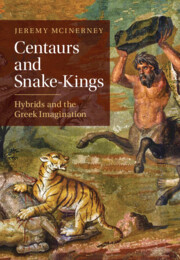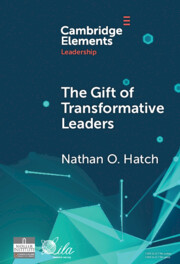227 results
8 - Redesigning pedagogy for transformation: creative body-based learning
- from Part 2 - Engaging pedagogies: making the curriculum come alive for all learners
-
-
- Book:
- Teaching to Transform Learning
- Published online:
- 25 October 2024
- Print publication:
- 05 December 2024, pp 122-136
-
- Chapter
- Export citation
9 - Building transformative classrooms through visual and creative body-based learning design
- from Part 2 - Engaging pedagogies: making the curriculum come alive for all learners
-
-
- Book:
- Teaching to Transform Learning
- Published online:
- 25 October 2024
- Print publication:
- 05 December 2024, pp 137-151
-
- Chapter
- Export citation
An Interview with National Leaders in the Arts and Humanities
- Part of
-
- Journal:
- Public Humanities / Volume 1 / 2025
- Published online by Cambridge University Press:
- 04 November 2024, e6
-
- Article
-
- You have access
- Open access
- HTML
- Export citation
Leverage points for increased grain legume consumption: a Swedish case study
-
- Journal:
- Renewable Agriculture and Food Systems / Volume 39 / 2024
- Published online by Cambridge University Press:
- 31 October 2024, e27
-
- Article
-
- You have access
- Open access
- HTML
- Export citation

Recycling the Roman Villa
- Material Salvage and the Medieval Circular Economy
-
- Published online:
- 08 November 2024
- Print publication:
- 31 October 2024
African Studies Keyword: “Transformation”
-
- Journal:
- African Studies Review , First View
- Published online by Cambridge University Press:
- 24 October 2024, pp. 1-23
-
- Article
-
- You have access
- Open access
- HTML
- Export citation

Centaurs and Snake-Kings
- Hybrids and the Greek Imagination
-
- Published online:
- 16 August 2024
- Print publication:
- 25 July 2024
3 - Contexts
-
- Book:
- The Archaeology of Southern Africa
- Published online:
- 15 May 2024
- Print publication:
- 06 June 2024, pp 33-52
-
- Chapter
- Export citation
Chapter 19 - Goethe and Philosophy
- from Part IV - Philosophy and Science
-
-
- Book:
- Goethe in Context
- Published online:
- 16 May 2024
- Print publication:
- 23 May 2024, pp 187-195
-
- Chapter
- Export citation
Chapter 2 - Exalting Eros
-
- Book:
- Neoplatonic Pedagogy and the Alcibiades I
- Published online:
- 16 May 2024
- Print publication:
- 23 May 2024, pp 28-74
-
- Chapter
- Export citation
Why Not In My Backyard? (W-NIMBY): the potential of design-driven environmental infrastructure to foster greater acceptance among host communities
- Part of
-
- Journal:
- Global Sustainability / Volume 7 / 2024
- Published online by Cambridge University Press:
- 22 May 2024, e26
-
- Article
-
- You have access
- Open access
- HTML
- Export citation

Neoplatonic Pedagogy and the Alcibiades I
- Crafting the Contemplative
-
- Published online:
- 16 May 2024
- Print publication:
- 23 May 2024
16 - Black Erotic Bodies
- from Part III - Quare Bodies
-
-
- Book:
- The Cambridge Companion to the Black Body in American Literature
- Published online:
- 09 May 2024
- Print publication:
- 16 May 2024, pp 233-244
-
- Chapter
- Export citation

The Gift of Transformative Leaders
-
- Published online:
- 17 April 2024
- Print publication:
- 16 May 2024
-
- Element
- Export citation
Chapter 4 - The Theology of the Book of Zephaniah
-
- Book:
- The Theology of the Books of Nahum, Habakkuk, and Zephaniah
- Published online:
- 28 March 2024
- Print publication:
- 04 April 2024, pp 173-238
-
- Chapter
- Export citation
8 - Transience, Responsible Transformation, and Deep Time in Daoist Thought
- from Part II - Intergenerational Ethics in Dialogue with Confucianism and Daoism
-
-
- Book:
- Intercultural Philosophy and Environmental Justice between Generations
- Published online:
- 14 March 2024
- Print publication:
- 21 March 2024, pp 153-164
-
- Chapter
- Export citation
14 - “This Is (Not) Who We Are”
- from Part III - American Constitutionalism and Constitutional Identity
-
-
- Book:
- Deciphering the Genome of Constitutionalism
- Published online:
- 14 March 2024
- Print publication:
- 21 March 2024, pp 179-192
-
- Chapter
- Export citation
5 - Devotional Experience
-
- Book:
- Ways of Living Religion
- Published online:
- 07 March 2024
- Print publication:
- 14 March 2024, pp 180-224
-
- Chapter
- Export citation
Chapter 2 - A Country Transformed, 1721–2024
-
- Book:
- The Impossible Office?
- Published online:
- 14 March 2024
- Print publication:
- 14 March 2024, pp 30-68
-
- Chapter
- Export citation
7 - Resilience
-
- Book:
- A Concise History of the Aztecs
- Published online:
- 08 February 2024
- Print publication:
- 15 February 2024, pp 246-284
-
- Chapter
- Export citation

